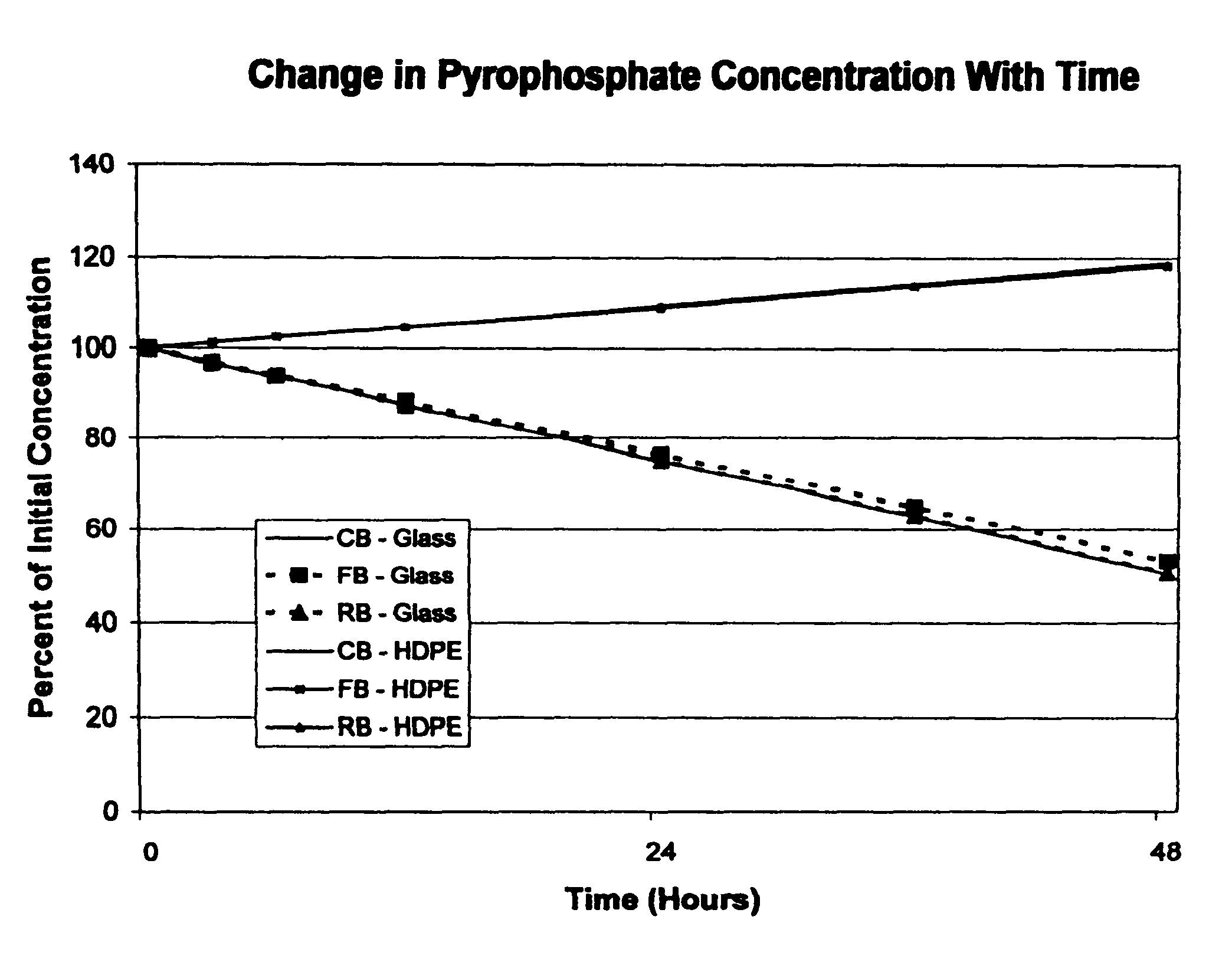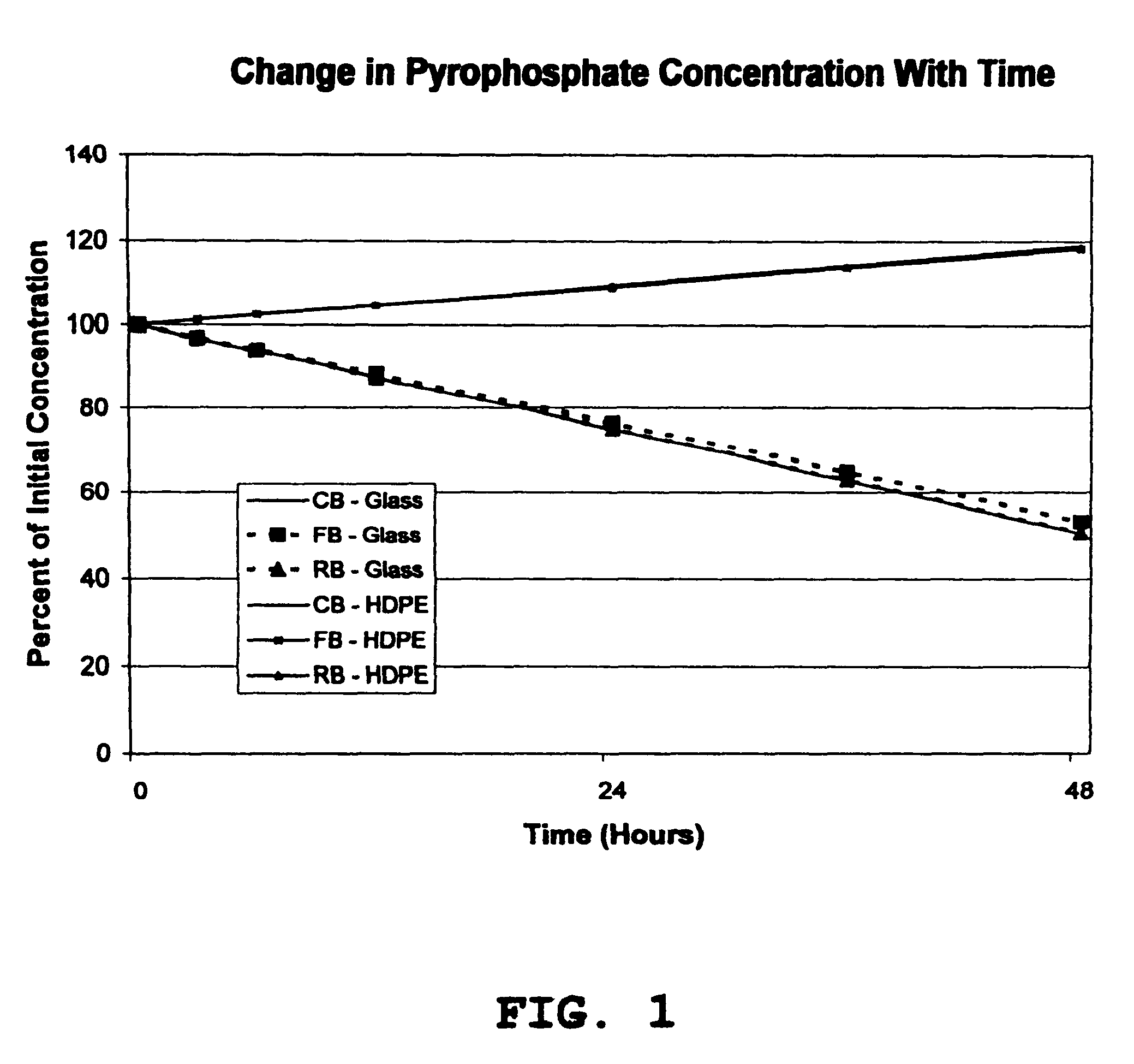Packaging of ferric pyrophosphate for dialysis
a dialysis and ferric pyrophosphate technology, applied in the field of dialysis treatment, can solve the problems of inability of the kidneys to produce enough erythropoietin to generate adequate amounts of red blood cells, inability to reduce the dose of recombinant erythropoietin, and inability to produce enough erythropoietin to achieve adequate red blood cell production, etc., to achieve the effect of reducing the dose dos
- Summary
- Abstract
- Description
- Claims
- Application Information
AI Technical Summary
Benefits of technology
Problems solved by technology
Method used
Image
Examples
example 1
[0028]The stability of soluble ferric pyrophosphate in three different types of aqueous sodium bicarbonate concentrates (CB, FB, and RB solutions) was monitored during storage at room temperature in glass and high density polyethylene (HDPE) containers. At each test interval (0, 3, 6, 12, 24, 36, and 48 hours), the appearance of the solution, the solution pH, and the concentrations of each of the major anions related to soluble FePPi (pyrophosphate, citrate, and phosphate) were determined. An HPLC assay with conductivity detection was used to determine the concentrations of the anions that were present in each of the bicarbonate solutions at each test interval.
[0029]The experimental data showed that the appearance and solution pH of each of the test solutions of soluble FePPi in aqueous bicarbonate concentrates CB, FB, and RB did not change with time during storage in either glass or HDPE containers. No precipitates of iron were detected in any of the test solutions. The citrate con...
PUM
 Login to View More
Login to View More Abstract
Description
Claims
Application Information
 Login to View More
Login to View More - R&D
- Intellectual Property
- Life Sciences
- Materials
- Tech Scout
- Unparalleled Data Quality
- Higher Quality Content
- 60% Fewer Hallucinations
Browse by: Latest US Patents, China's latest patents, Technical Efficacy Thesaurus, Application Domain, Technology Topic, Popular Technical Reports.
© 2025 PatSnap. All rights reserved.Legal|Privacy policy|Modern Slavery Act Transparency Statement|Sitemap|About US| Contact US: help@patsnap.com


